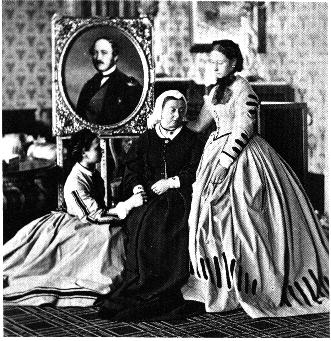Post-mortem photography was popularized in mid-victorian America through daguerrotypes,ambrotypes, tintypes and carte de visites (CDVs). Most of these photographs were of children, indicating the probability of a high infant mortality rate. In most cases, this was probably the only photograph of the child.
Photographers advertised house calls for post mortem photos. In more rural areas, the body would be cleaned, dressed and taken to the photography studio. Photographs of a deceased loved one were usually taken in a natural pose, in bed or in a chair. Photographs with the deceased in a coffin were less popular.
Photographs were given to loved ones, family and friends or used on memorial cards announcing the death of a loved one. They were considered a "memento mori," in other words, "remember thy death," a remembrance of the deceased. By the 1860s, the CDV was affordable to most families.
Family members would also be photographed with a painting or picture of the dearly departed in the background. Photographs were also taken of a family member gazing mournfully at a locket containing a photograph of the deceased. Post-mortem photography had turned grieving into an art form.


